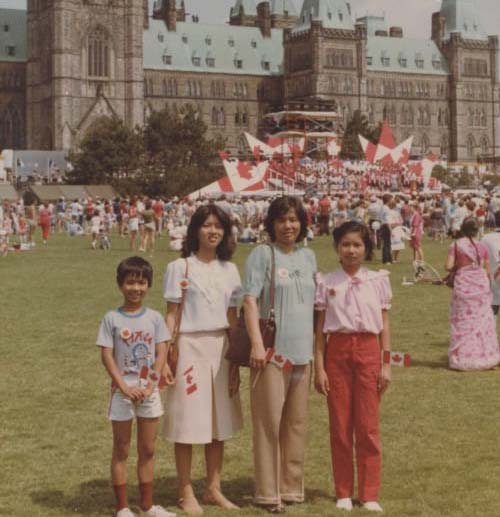A secret war, 100,000 refugees and the creation of the Private Refugee Sponsorship program

Between 1975 and 1985, over 100,000 Southeast Asian refugees from three countries came to Canada in the wake of the Vietnam War and the victory of communist North Vietnam in 1975. Those escaping Vietnam became known as the “boat people,” many having embarked on leaky and over-crowded boats on dangerous sea crossings to escape the country.
Others were fleeing two neighbouring countries afflicted by related violence as a result of the spillover of the Vietnam War.
Cambodian Genocide
In Cambodia, the Khmer Rouge government had seized power in 1975, led by the dictator Pol Pot, and committed genocide against its own people. Those targeted included military and political officials from the deposed government, business leaders, professionals, ethnic minorities, intellectuals - anyone the new government viewed as a threat. The number of deaths is estimated between 1.5 and 2 million.
The Lao Secret War
Laos, a strategically located country used by the North Vietnamese to run supplies, had had its own civil war in parallel with the war in Vietnam. During this period, it was heavily bombed by the Americans as part of what the CIA called the “Secret War”- in fact, between 1964 and 1973, it became the most bombed country per capita in history. When the civil war ended and the communist organization Pathēt Lao emerged victorious, 300,000 fled across the border to Thailand.
The outflow of people from these three countries resulted in a significant refugee crisis.
Canada’s response
Canada’s response to this crisis was notable. The government created the Private Sponsorship of Refugee program. Canadians could now form groups to help fund, welcome, and integrate newcomers as they found their footing in this new country. Of the 60,049 refugees resettled in 1979-80, more than half (32,281) were welcomed through the Private Sponsorship program.
So remarkable was Canada’s contribution to the resettlement that the people of Canada were awarded the 1986 UNHCR Nansen medal, which recognizes those who “go above and beyond the call of duty to protect refugees, as well as internally displaced and stateless people.” It was the first time the medal had been awarded to the people of a country.
Hearts of Freedom exhibition
A new exhibition, called Hearts of Freedom: Stories of Southeast Asian Refugees, featured at the Museum until December 3, 2023, captures individual stories of the courageous refugees who fled, in their own words. It also traces the timeline of the crisis and of Canada’s response. Learn about this important moment in Canadian immigration history from the perspective of those at the centre of it - those who fled danger in search of freedom and found a new home in Canada.